Material Information

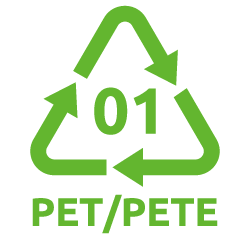
Polyethylene Terephthalate
Characteristics
- PET is clear, tough, and has good gas and moisture barrier properties, resistance to heat.
- Commonly used in bottles and many food and non-food containers.
- Stiffness, strength, toughness, ease of processing, and ease of forming.
Packaging Applications
- Soft drink
- Water
- Sports drink
- Beer
- Mouthwash
- Catsup and salad dressing bottles
- Pickle, jelly and jam jars
- Cosmetic bottles
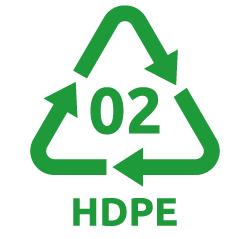
High Density Polyethylene
Characteristics
- Unpigmented bottles are translucent, have good barrier properties and stiffness, and are well suited to packaging products with a short shelf life.
- HDPE has good chemical resistance, it is used for packaging many household and industrial chemicals.
- Pigmented HDPE bottles have better stress crack resistance than unpigmented HDPE bottles.
Packaging Applications
- Liquid laundry detergent
- Shampoo conditioner
- Motor oil bottles
- Milk and juice bottles
- Yogurt and margarine tubs
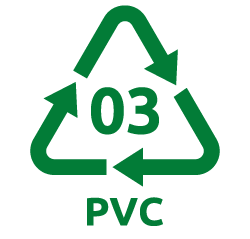
Vinyl / Polyvinyl Chloride
Characteristics
- Poor heat stability.
- Molding and decomposition temperature range are similar.
- Poor fluidity, poor molding appearance.
- Corrosive to mold.
- Most easy to burn and generate acid gas.
- Good strength, electrical insulation and chemical resistance.
- Can be softened after adding DOP.
- Poor heat resistance.
- High sp. Gravity (1.4) has burning resistance; good for printing
- Different formula has different characteristics. Wide application range, low price, high impact to environment. Likely to decompose when molding temperature exceeds 190°C and emit corrosive gas of HCI.
Packaging Applications
- Clear food and non-food packaging
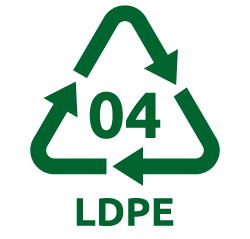
Low Density Polyethylene
Characteristics
- High shrinkage, easy to bend and deform.
- Need cooling time, poor molding yield.
- Sink will occur to product, need forceful mold releasing.
- Molding shrinkage is highly affected by mold temperature. Poor stability.
- Good fluidity, good heat stability, but molecular orientation leads to distortion.
- Lighter than water and soft.
- Not heat resistance, adhesive printing.
Packaging Applications
- Squeezable bottles (e.g. honey, mustard)
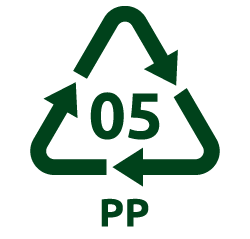
Polypropylene
Characteristics
- Low fluidity, flow mark appears if filling were poor, when pressure is not enough, easy to have dent, need high-pressure molding.
- In optical use, transparency is a problem, when mixing with other material; care shall be given to decomposition.
- Excellent in molding property, mechanical strength is better than PE.
- Good water, chemical resistance and electrical insulation.
- Easy to distort, deform and dent.
- Adhesive, the lightest plastic.
- Low Sp. Gravity (about 0.90), FDA grade, good transparency, no moisture absorption, low price, heat resistance and normal mechanical strength are poor, low foaming percentage, poor for printing.
Packaging Applications
- Catsup bottles
- Yogurt containers
- Margarine tubs
- Medicine bottles
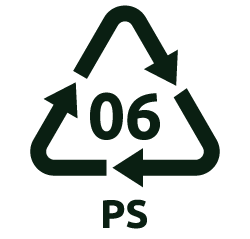
Polystyrene
Characteristics
- Of Ethylene family, general plastic resin.
- Good fluidity, good molding yield and molding property.
- Easy to break, not good impact resistance.(GPPS)
- Easy to trim.
- Colorless, transparent, easy to be dyed, and good insulation.
- Good in water resistance and chemical resistance.
Packaging Applications
- Aspirin bottles

Characteristics
Use of this code indicates that the package in question is made with a resin other than the six listed above, or is made of more than one resin listed above, and used in a multi-layer combination.
Packaging Applications
Dependent on resin or combination of resins



